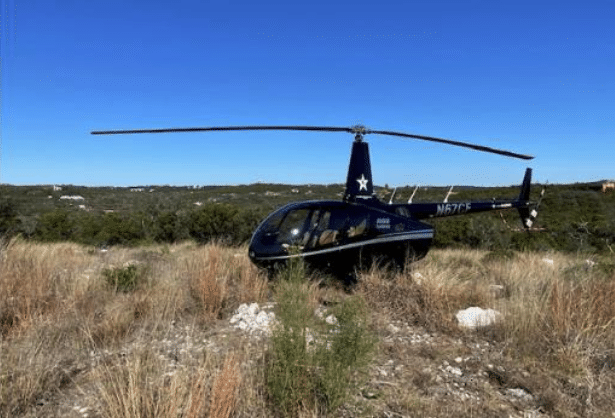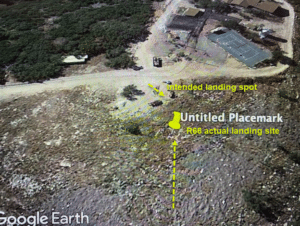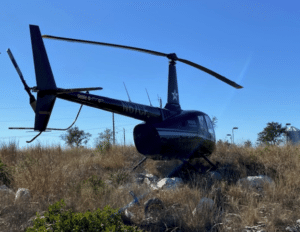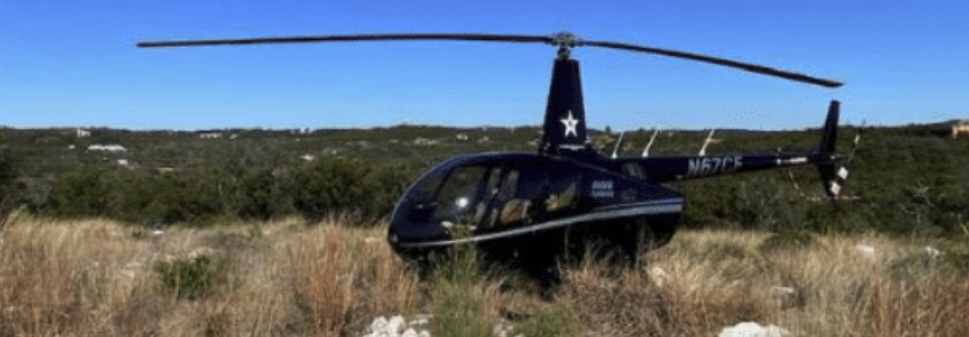
- HOME
- DWI
- What Is A DWI Specialist
- Arrested For DWI?
- DWI 2nd Offense
- DWI 3rd Offense
- Penalties For DWI
- Prior DWI Convictions
- DWI (Driving While Intoxicated)
- DUI (Driving Under The Influence)
- Drunk Driving Lawyer
- .08 Alcohol Concentration
- Felony DWI
- DWI with Child
- Intoxication Assault
- Intoxication Manslaughter
- DWI with CDL
- DWI Expunction
- Drivers License Suspension & ALR
- Impaired Driving vs Drunk Driving
- DWI & Gun Ownership
- Public Intoxication
- BWI (Boating While Intoxicated)
- FWI (Flying While Intoxicated)
- Drug Possession
- AVIATION
- REVIEWS
- PAYMENTS
- INFO
- ABOUT
- About Us
- DWI Specialist J. Gary Trichter
- DWI Lawyer Leslie LeGrand
- DWI Lawyer Aaron White
- DWI Lawyer Gregory Houlton
- Of Counsel Attorneys
- CONTACT
- HOME
- DWI
- What Is A DWI Specialist
- Arrested For DWI?
- DWI 2nd Offense
- DWI 3rd Offense
- Penalties For DWI
- Prior DWI Convictions
- DWI (Driving While Intoxicated)
- DUI (Driving Under The Influence)
- Drunk Driving Lawyer
- .08 Alcohol Concentration
- Felony DWI
- DWI with Child
- Intoxication Assault
- Intoxication Manslaughter
- DWI with CDL
- DWI Expunction
- Drivers License Suspension & ALR
- Impaired Driving vs Drunk Driving
- DWI & Gun Ownership
- Public Intoxication
- BWI (Boating While Intoxicated)
- FWI (Flying While Intoxicated)
- Drug Possession
- AVIATION
- REVIEWS
- PAYMENTS
- INFO
- ABOUT
- About Us
- DWI Specialist J. Gary Trichter
- DWI Lawyer Leslie LeGrand
- DWI Lawyer Aaron White
- DWI Lawyer Gregory Houlton
- Of Counsel Attorneys
- CONTACT
SEEING THE R66 “LOW RPM LIGHT” AND HEARING THE “LOW RPM HORN” MEANS “IMMEDIATELY LOWER THE COLLECTIVE”! RIGHT?? MAYBE!!!

I. INTRODUCTION
January 4, 2021 was a beautiful morning in Bandera, Texas, which is known as the “Cowboy Capital of the World”. Temperatures were in the 60s and winds were calm. It was a CAVU day (clear above, visibility unobstructed)! About 10:30 a.m., I departed with a friend, for the purpose of dropping her off at San Antonio’s International Airport’s FBO, Millionaire (KSAT). Flying a 2013 Robinson R66 turbine helicopter, we departed from a private ranch helipad near Kerrville (KERV), on a 115 o heading for the 39 nautical mile trip, cruising approximately 110 knots at 3,000’ MSL. Radio traffic was light and the trip in was uneventful.
Having my friend safely delivered to her family, I topped off with 24 gallons of JET A fuel and was airborne headed back to the Bandera helipad by 11:30 a.m. My pre-flight revealed nothing wrong including the low rotor RPM horn check I did during the run-up. My departure was nothing less than beautiful as was my climb back to 3,000’ MSL, my cruising altitude. However, my world changed in a heartbeat as I saw the “low rotor RPM” annunciator light come on just as the “low rotor RPM warning horn” sounded.

II. THE EMERGENCY
My first thought was “not really, not now”; but the trained part of me immediately took over and the emergency decision process began. Scanning my oil temperature, oil pressure, MGT, and N1 gauges all revealed they were all okay. Seeing them in the green, did not make the low rotor RPM light go out or the low rotor RPM horn stop. I did not sense any unusual vibrations or shaking unless you want to count my heart racing. In addition, I did not hear a change in the engine sound, but it was clearly being masked by the low rotor RPM horn. One side of my brain was saying: “fly the helicopter, preserve rotor RPM” while the other side of the brain said: “start looking for a place for an emergency landing”.

(Proceeding from the bottom of the picture, I thought I had enough distance to make the dirt area just above and to the left of the pin. To me, that was the best cleared area for an emergency landing, and also, it provided a secondary area in case I had to land short – which is what happened. FYI, because of my initial altitude and airspeed, the thought of having to do a forced emergency landing into the treetops, was fortunately not something I had to think about).
As per my training, I immediately lowered the collective fully down to prevent rotor RPM loss. Having entered the autorotation, I then scanned the engine torque and the N2/Rotor gauges, the N2 needle was on the lower red line and that the rotor needle was sitting just below 95%. It was at this time that I both identified a vacant lot on a tree covered hillside for my emergency landing spot (1421’ MSL) and slowed my airspeed to 70 MPH. The reality of the moment had sunk in and my brain reviewed the coming autorotation inputs I had done so many times in the past – in fact, just two days earlier, I had practiced them at KERV. Those inputs, as they appear in the R66 POH at Section 3, are:
III. I CAN DO IT
As I descended, I ran through in my thoughts the above R66 emergency procedure several times. Following the checklist, I immediately fully lowered the collective down which did silence the horn but did not turn off the “low rotor RPM light annunciator”. It was at this time, that I scanned my air speed, descent rate, trim, and kept the main rotor RPM being between 95% and 106%. Let me tell you something, with only 1,589’ in my energy bank account, in a 1,500’ PM descent, the ground came up really fast. By the way, I have the Biblical scripture from Luke: 1:37 saying “For nothing is Impossible with God” decaled on both sides of the R66’s mast. Being a believer, I was really glad I did because I was definitely connected with, and talking to, the Lord at that time. Specifically, “Dear Lord, do not let me _ _ _ _ this up!! I know I can do this with your help!!”.

(This was the landing spot I chose, specifically, the dirt half-moon just above the yellow pin/the approach was from the bottom of the picture going up/there were no cars at the time of the emergency landing. One thing I learned from this experience is that it is better to pick a good spot close because it will give you additional time).
IV. THE LOW ROTOR RPM WARNING SYSTEM EXPLAINED
Speaking now to the R66’s POH “low RPM audio alert”, (7-21) it says:
AUDIO ALERTS
“All R66 helicopters have a low-RPM horn which sounds when the rotor RPM is below 95%. The horn is muted when the collective is fully down”. The maintenance manual at 96-60 (2020), speaking to “Low Rotor RPM Adjustment” also provides: “The low rotor RPM warning unit is located inside the upper console, mounted to the left vertical panel. Two magnets attached to the main gearbox tail rotor driveline output yoke provide an RPM signal for the warnings unit’s gearbox-mounted Hall-effect senders. When the collective is at least 0.2 to 0.4 inch (measured at grip) above the full down position and rotor RPM is 95% or less, the warning unit illuminates the Low RPM annunciator segment and sounds two warning horns.
Fully lowering the collective will silence both horns but will not extinguish the annunciator segment. The Low RPM annunciator segment and both horns must remain off above 95% rotor RPM (emphasis added). To make an adjustment, remove the plastic plug (from a 3/8-inch diameter hole) in the left- vertical panel exterior. Adjust screw on back of warning unit (2 turns equals approximately 1% change)”.
Continuing my scan during the descent, I thought about trouble shooting the problem and asked myself the following questions:
– Had the throttle handle been turned fully open?
– Had the collective been accidently pushed down or had the friction on it slipped allowing it to lower?
V. PRACTICE MAKES PERFECT
Those questions in mind, I decided to re-power up the R66 and then turned the throttle handle fully open and then smoothly brought the collective full up. Regrettably, the low rotor RPM horn continued to sound, and, the low rotor RPM light remained on. I did see the N1 and N2 gauge needles start to rise, but there was a significant lag in both, while at the same time, the ground was getting really big. Accordingly, as there was not time to experiment, I went right back into the autorotation: at 40’ I flared, at 8’ I pushed the nose level, and falling through level, I smoothly raised the collective causing the R66 to lightly touch down on the
ground.

(6” further back or to the right would have been disastrous)
VI. AFTERMATH AND THANKS
Fortunately, the touch down spot was clear but 6” to the right or 6” to the rear would have been disastrous because of large rocks. There was no question in my mind that the good Lord had a big part in keeping the R66 from getting damaged and me from getting hurt. Indeed, upon landing the first words out of my mouth were “thank you Lord, thank you Simon Jones, and thank you Robinson”! FYI, Simon is one of the instructors at the Robinson Safety Course.
After landing, I let ATC know all was well and then called my mechanics, Mike Underwood & Casey Rivera of SVT Aviation, who were out to the scene of the non-crash site in about two hours.
Interestingly, in trouble shooting the problem, they determined that the low rotor RPM warning system was the problem and not the engine or transmission. Apparently, there was a fault in the electrical system for the low rotor RPM warning light which caused it to illuminate notwithstanding the RPM was above 95%. Once the light comes on, the system then causes the low rotor RPM horn to sound.
Having thought about this, it dawned on me, that I unnecessarily did a full emergency autorotation to the ground. I did this following Robinson training and POH instructions even though I had a perfectly good motor and transmission – I just did not know it. Knowing what I know now but didn’t know then, I would not have immediately fully lowered the collective, left the power where it was, and continued my flight to my destination or would have made a powered normal precautionary landing at the chosen emergency touch down spot. Thanking God again for the field that was there, I envisioned forcing myself into an autorotation no matter what was underneath me.
I thank God that I was able to make that field and did not have to put down in the treetops. As it was, the Google Earth picture shows a yellow pin where I landed which left me about 40’ shy of the dirt area I was hoping to make. I have also included a few pictures of the R66 on the ground so that the reader can see the unfriendliness of the terrain. Clearly, from looking at the Google Earth picture, had I been compelled to land in the wooded area, my no damage and no injury happy ending would have been very different.

(As you can see the size of the rocks, 6” to the right would have been as equally bad as 6” back)
So, what did I learn from this experience? First, it is important to regularly practice autorotations. Second, it is of primary importance when you see a low rotor RPM light, or have the low rotor RPM horn come on, that your first action should not be to immediately lower the collective fully down, but rather, to immediately focus your attention on both the N2 engine RPM and the rotor RPM needles. If they are in the proper operating range, then hesitate on putting the collective down and trouble shoot the problem – and always keep your eyes on the rotor RPM as you do. You can eliminate the horn by putting a collar around the low RPM horn circuit breaker so you can pull it in an emergency which will silence the horn (mine has a collar now). Here, you should only pull the CB if this is necessitated by the emergency.
Remember, the horn in meant to be a distraction and, remember, you do not want it to become a distraction from safety. For example, while flying at night, having the horn continue to sound where you cannot get to a safe landing area for 15-20 minutes would create an unsafe distraction during that critical period of flight.
Under that or similar circumstances, since you already know there is a low rotor RPM danger, it is better to be able to concentrate on flying the helicopter, keeping your visual focus on your flight and engine instruments, and most importantly, on your rotor RPMs.

Note, however, the low RPM light will still be illuminated. Reflecting on my twin-engine fixed wing engine out emergency procedure check list, I am reminded that I am wired to think “identify, verify, and feather”. Correctly following that procedure, a fixed wing twin engine pilot will be prevented from feathering the wrong motor. Accordingly, I have a new memorized procedure where time permits (based on altitude and airspeed), is that if I have a low rotor RPM annunciator light come on and/or I hear a low rotor RPM horn.
Specifically, it is to “identify, the N2 and rotor RPM gauge needles, and verify that the needles are showing low, and if so, then, and only then, to fully lower the collective”! Absent being too low or too slow, I will Never Again fully lower the collective again until I first verify the rotor RPM is low. The next thing I learned is that when picking an emergency landing spot, it is best to choose the closest spot and not necessarily the best spot. One final note, I highly recommend this scripture on your mast because you really can do all things with God.
* J. Gary Trichter is a fixed wing CFI, CFII and MEI. Gary regularly flies a Cessna 421C and an Aero Vodochody L39C. He has 2,500 hours in airplanes and 800 hours in helicopters. Gary has owned his R66 for three years and has 500 hours in it. He has attended the Robinson Safety Course four times and highly recommends it.
TELL US ABOUT YOUR CASE
Form Submissions have a fast response time. Request your free consultation to discuss your case with one of our attorneys over the phone. The use of this form does not establish an attorney-client relationship.
The information on this website is for general information purposes only. Nothing on this site should be taken as legal advice for any individual case or situation. This information is not intended to create, and receipt or viewing does not constitute, an attorney-client relationship.


